- Abstract
- Workers aged 15-64 with primary school education or less, average age
- Average age of workers aged 15-64 with primary education or less (worldwide)
- Workers aged 15-64 with primary education or less, average age (world countries, latest year)
- Workers aged 15-64 with primary school education or less, mean age (region, latest year)
- Reference
Abstract
According to 2021 data, Uruguay has the highest average age among workers aged 15-64 with primary education or less, at 46.1 years. This points to a particular trend in the Uruguayan labour market. Generally, a higher average age of workers with primary education or less indicates an improving quality of the workforce, but also indicates educational underachievement and a lack of opportunities for skill upgrading. In situations like Uruguay, where economic development and education systems may be slower to improve, there tends to be a higher proportion of older workers. Moreover, while older workers have greater job stability, they may also have difficulty adapting to new technologies and skills. For this reason, in addition to improving education, providing workers with opportunities to improve their skills and retrain will be important issues for Uruguay.
Workers aged 15-64 with primary school education or less, average age
In data from 1981 to 2021, the highest average age for workers aged 15 to 64 with primary school or less education was recorded in Italy in 2015, at 52.3 years old. This high average age in Italy reflects changing characteristics of the labour market, the education system and the structure of the economy. In Italy, older people tend to stay in the labour market longer, especially in lower-skilled occupations where the age group is older. This suggests that workers will continue working for longer periods without reaching retirement age, and it also leads to limited employment opportunities for young people. Furthermore, the proportion of older workers in Italy is high due to a high percentage of those with low levels of education and a lack of opportunities for updating skills and vocational training. Recent data shows that Italy’s average age is still 96.9% of its peak, meaning the population is still ageing, but the average age is showing some improvement as more young people enter the labor market. Going forward, it will be important to strengthen retraining and skills training to deal with the increasing number of elderly people in the labor market, as well as to promote employment for young people.
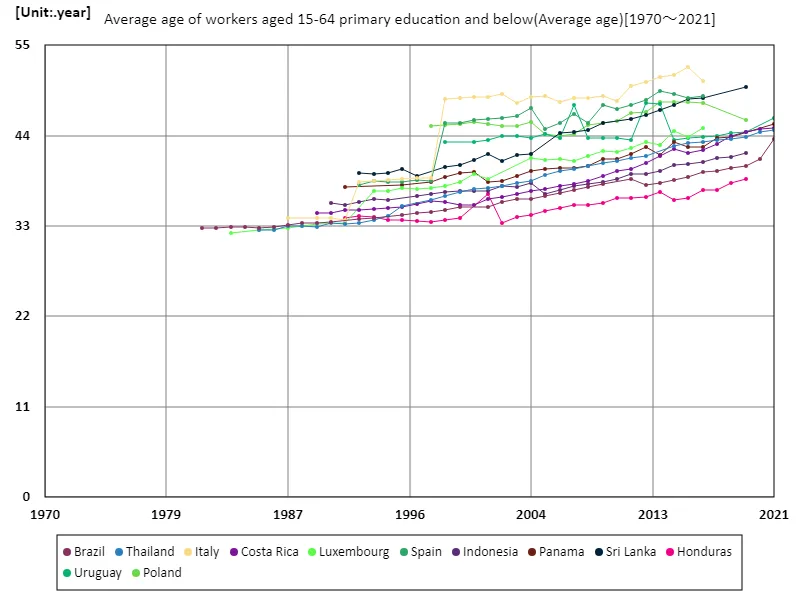

The maximum is 52.3year[2015] of Italy, and the current value is about 96.9%
Average age of workers aged 15-64 with primary education or less (worldwide)
In data from 1981 to 2021, the highest average age for workers aged 15 to 64 with primary school or less education was recorded in Italy in 2015, at 52.3 years old. This high average age reflects the prevalence of older workers in the Italian labour market. In Italy, there is a strong tendency to continue working after retirement, and it is common for older people to continue working for long periods of time, especially in low-skilled jobs. This will make it difficult for young people to enter the industry, and the overall average age will rise. Currently, Italy’s average age is at 96.9% of its peak, but this still represents a high level. This situation is thought to be related to the aging of the labor market as well as delays in educational opportunities and skill development. Going forward, reskilling and training to increase labor market flexibility and promoting youth employment will likely become important issues.
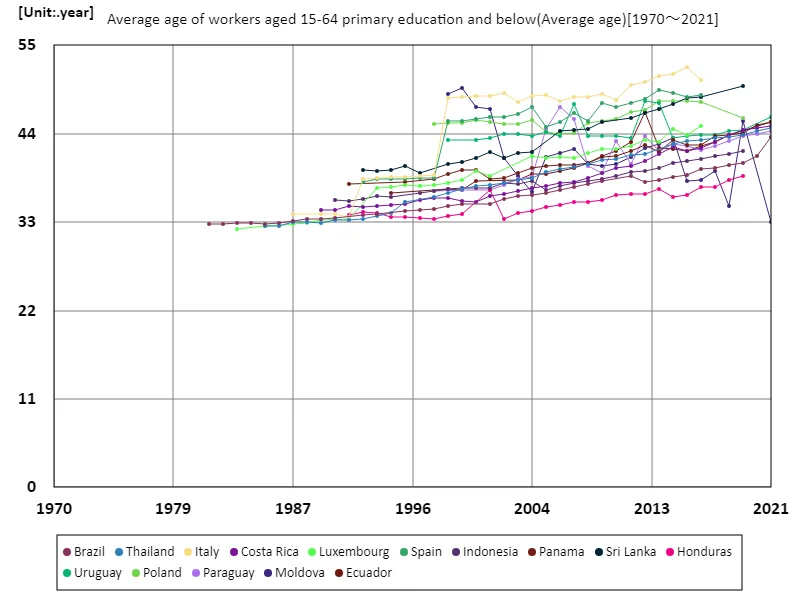

The maximum is 52.3year[2015] of Italy, and the current value is about 96.9%
Workers aged 15-64 with primary education or less, average age (world countries, latest year)
According to 2021 data, Peru has the highest average age for workers aged 15-64 with primary school or less education, at 46.7 years. This trend reflects the high proportion of older workers in Peru’s labor market. The average age of 42 means that the population is ageing overall, and it is common for workers in low-skilled jobs to continue working for long periods of time. The total age of 672 also suggests that there may be a concentration of older workers in certain occupations. As has been the case to date, the increase in the elderly population in the labor market is also linked to the maturity of the economy and problems with the education system. In countries like Peru, where there is a large proportion of workers with primary school education or less, support for retraining and upskilling can be insufficient, resulting in workers tending to stay in the same occupation for long periods of time. As a result, the aging of the labor market puts pressure on employment opportunities for young people and affects the dynamism of the overall economy. In the future, education reforms and retraining programs will be required to increase labor market flexibility.
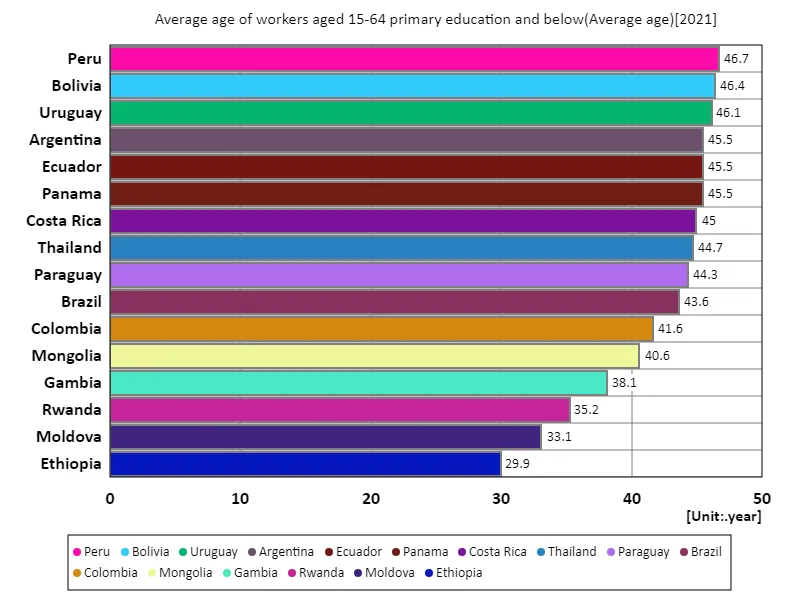

The maximum is 46.7year of Peru, the average is 42year, and the total is 672year
Workers aged 15-64 with primary school education or less, mean age (region, latest year)
According to 2008 data, the Central African Republic had the highest average age for workers aged 15-64 with less than primary education, at 32.2 years. This reflects the unique situation in the country’s labour market. The average age of 32.2 years indicates that the overall workforce is relatively young, and also suggests that the age range is wider even in occupations with primary school education or below. The Central African Republic’s education system is underdeveloped, and many workers continue to have no more than primary school education. This is thought to be due to a lack of educational opportunities and economic constraints. The average age is thought to be 32.2 years old, as workers in low-skilled jobs are concentrated in the relatively young age group. This situation suggests that while there is a large young workforce, there is a shortage of workers with advanced skills and expertise, making improving education and skills a challenge for the development of the labor market. In the future, improving the quality of education and providing opportunities for vocational training will be important, and measures to diversify the labor market and promote economic growth will be required.
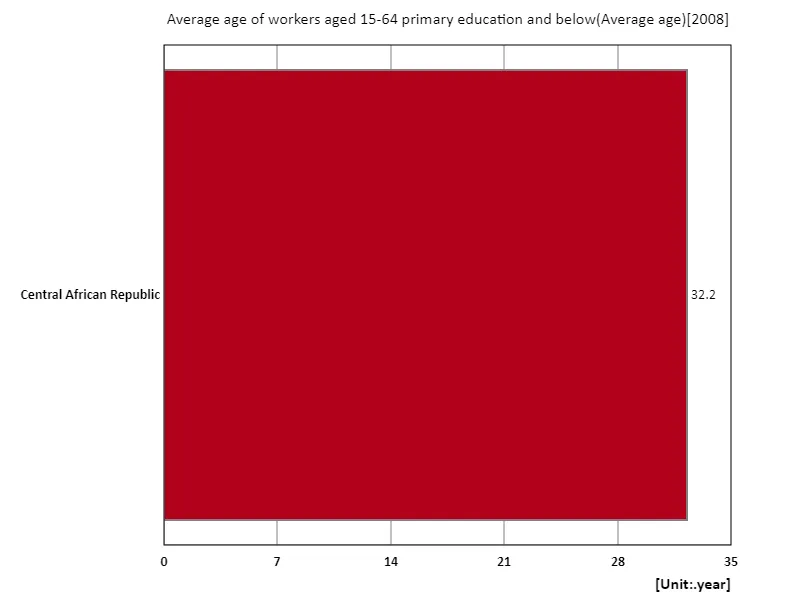

The maximum is 32.2year of Central African Republic, the average is 32.2year, and the total is 32.2year
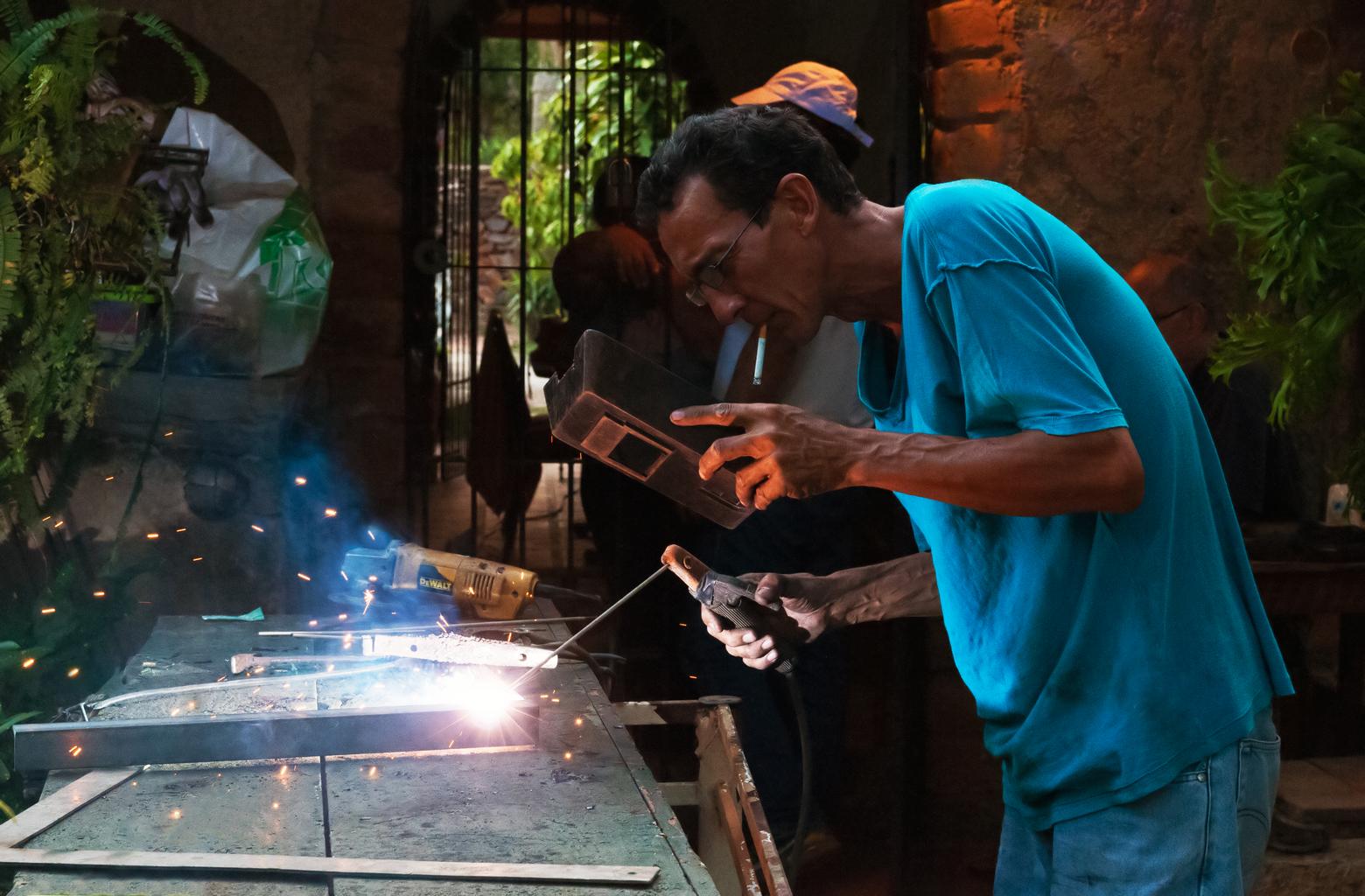


Comments